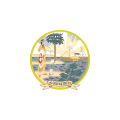| Company A, 146th Signal Battalion | |
|---|---|
| Active | 1887– |
| Country | United States |
| Allegiance | |
| Branch | Florida Army National Guard |
| Type | Signal (formerly Infantry and Quartermaster) |
| Size | Company |
| Garrison/HQ | Jacksonville, Florida |
| Nickname(s) | "Metropolitan Light Infantry" "Jacksonville Rifles" |
| Engagements | World War I World War II Iraq War |
Company A, 146th Signal Battalion is a unit of the Florida Army National Guard, stationed in Jacksonville, Florida. The company dates back to 1887 with the founding of the "Metropolitan Light Infantry". For its first 68 years the unit served as an infantry company and deployed as Company F, 124th Infantry during World War II. After WWII the unit reorganized again as infantry, then as a quartermaster company for eight years, and since February 1963 the Metropolitan Light Infantry has been a signal company.




